- Seborrheic dermatitis is linked to sebum-rich skin areas.
- Malassezia yeast isn’t the sole culprit; altered sebum composition plays a key role.
- Healthy sebum protects skin; abnormal sebum can fuel Malassezia and inflammation.
- Studies reveal specific sebum differences in individuals with seborrheic dermatitis.
- Various factors can contribute to imbalanced sebum, from diet to skin-level issues.
Seborrheic dermatitis, a non-contagious skin condition, often targets specific areas of the skin [1]. This localized nature points towards factors inherent to those skin regions. A key characteristic of these commonly affected areas offers a significant clue: they are rich in sebum and sebaceous glands.
These areas predominantly include:
- Scalp
- Forehead
- Sides of nostrils
- Cheeks
- Eyelids
- Behind the ears
- Front of the chest
- Area between shoulder blades
Individual Differences Matter
While sebum-rich areas are generally consistent, individual variations exist. Seborrheic dermatitis can appear in less common areas, but the locations listed above are the most frequently observed.
The consistent link between seborrheic dermatitis and sebum-rich skin strongly suggests that sebum itself plays a central role in this condition.
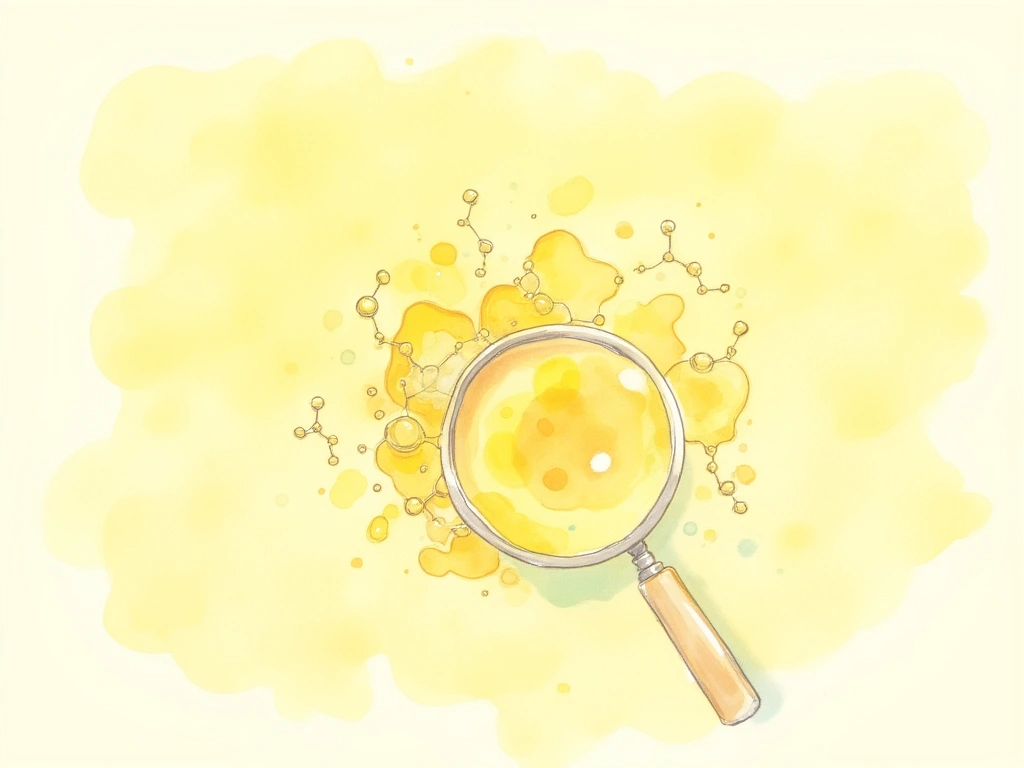
Why Sebum Composition, Not Just Malassezia, Matters in Seborrheic Dermatitis
While Malassezia fungi are often implicated in seborrheic dermatitis, a deeper look reveals a more nuanced picture. Malassezia are naturally present on healthy skin as commensals, meaning they are part of our normal skin microbiota. However, they also possess the ability to trigger inflammation [2].
These yeasts thrive on lipids, a major component of skin sebum [3]. As Malassezia feeds on sebum, it releases oleic free fatty acids. In susceptible individuals, these fatty acids can provoke the symptoms of seborrheic dermatitis [4].
Therefore, the issue isn’t simply the presence of Malassezia. Instead, the focus shifts to the oleic free fatty acids produced by Malassezia metabolism of sebum. Since Malassezia is a normal skin resident, understanding sebum composition – its food source – becomes crucial.

The Protective Role of Healthy Sebum
Sebum is a complex mixture composed mainly of triglycerides, wax esters, squalene, cholesterol, anti-microbial peptides, and anti-microbial histones [5]. This oily substance naturally attracts various oil-dependent microorganisms, including propionibacterium acnes and malassezia yeasts.
However, healthy sebum isn’t defenseless. It actively participates in skin defense. The breakdown of triglycerides into anti-microbial free fatty acids [6], along with anti-microbial peptides and histones [7], provides a natural defense against harmful bacteria and fungi. Thus, balanced sebum composition is essential for skin protection.
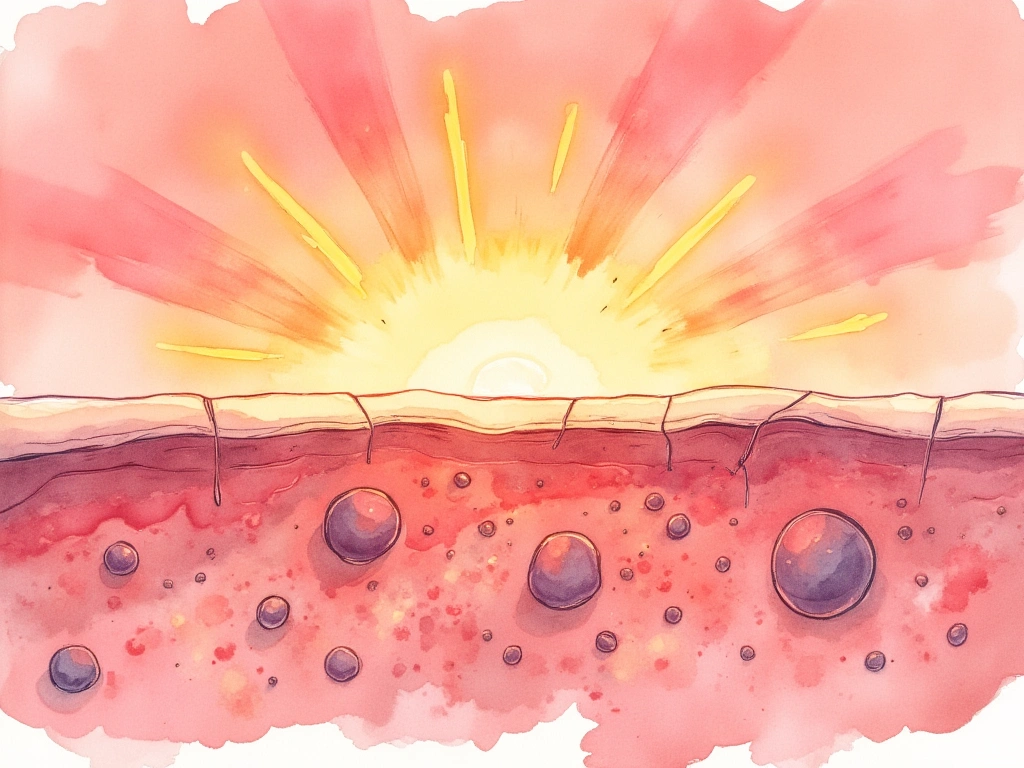
When Sebum Composition Goes Wrong: Fueling Inflammation
An altered sebum composition can lack the necessary protective components, leaving the skin vulnerable. This “unprotected” sebum becomes an ideal food source for organisms like Malassezia.
In this scenario, Malassezia may consume the skin’s natural defenses within the sebum, weakening this protective layer. This process releases irritating fatty acids [8] and compromises the skin’s first line of defense, simultaneously creating an irritating environment.
The skin responds by initiating a secondary defense, involving inflammation and more complex immune responses (adaptive immunity). Paradoxically, the skin may also produce more sebum to compensate for the compromised layer. However, if the newly produced sebum is also imbalanced, this can inadvertently worsen the situation, creating a vicious cycle that favors Malassezia overgrowth and persistent inflammation.
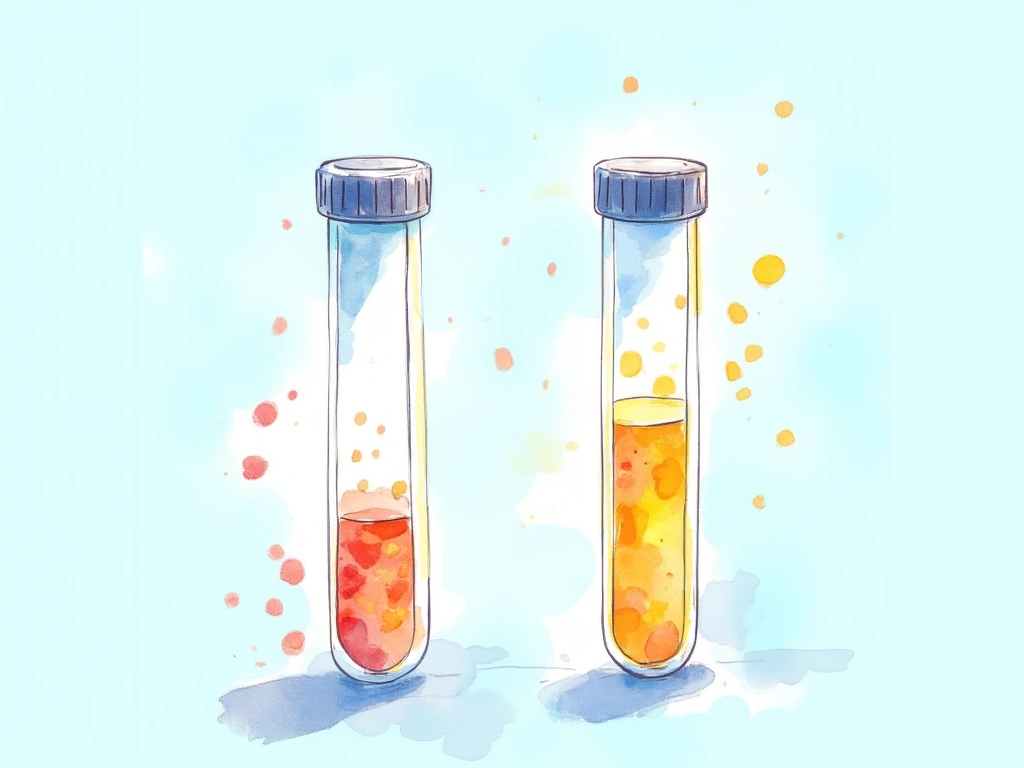
Sebum Composition Differences in Seborrheic Dermatitis
Given sebum’s critical role, identifying specific sebum composition differences in individuals with seborrheic dermatitis is vital. Unfortunately, research directly examining sebum composition in seborrheic dermatitis is limited.
However, existing studies do point to notable differences:
- Lowered iodine number and squalene, elevated cholesterol: Individuals with seborrheic dermatitis show reduced iodine number and squalene in their sebum, but increased cholesterol levels [9].
- Reduced antioxidants and key fatty acids: Seborrheic dermatitis sufferers have lower levels of vitamin E, glutathione, and specific polyunsaturated fatty acids [10].
- Enzyme impairment in infants: Infants with seborrheic dermatitis exhibit impaired delta-6-desaturase enzyme function [11]. This enzyme is crucial for breaking down certain essential fatty acids [12].
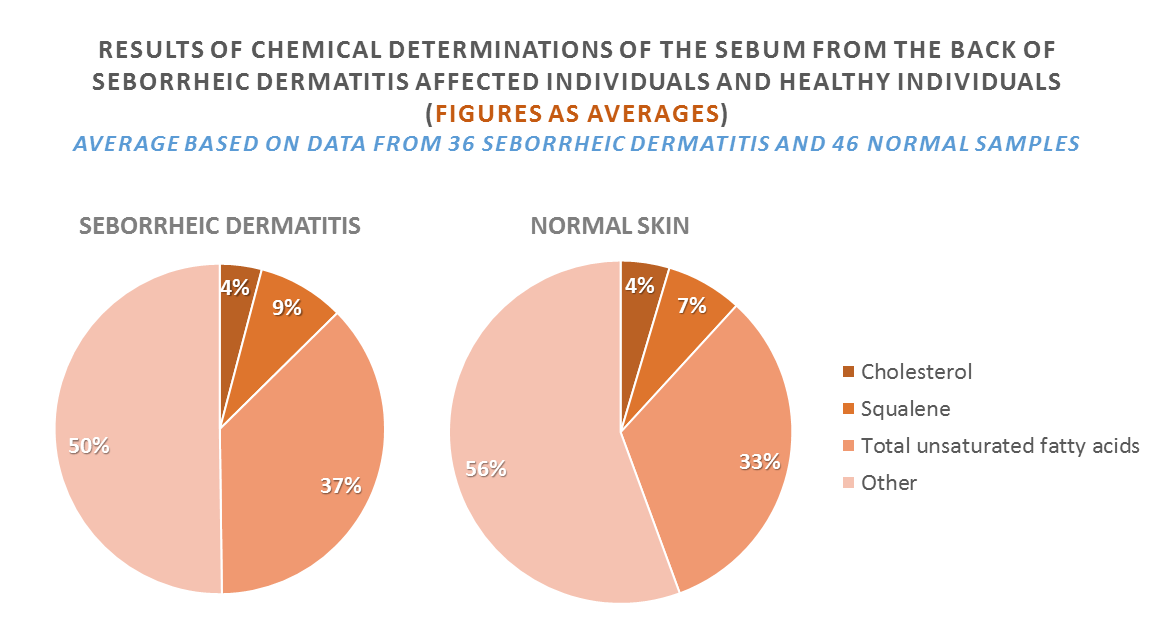
These findings suggest that seborrheic dermatitis isn’t necessarily caused by sebum overproduction, but rather by the skin’s struggle to produce sebum with the correct protective composition.
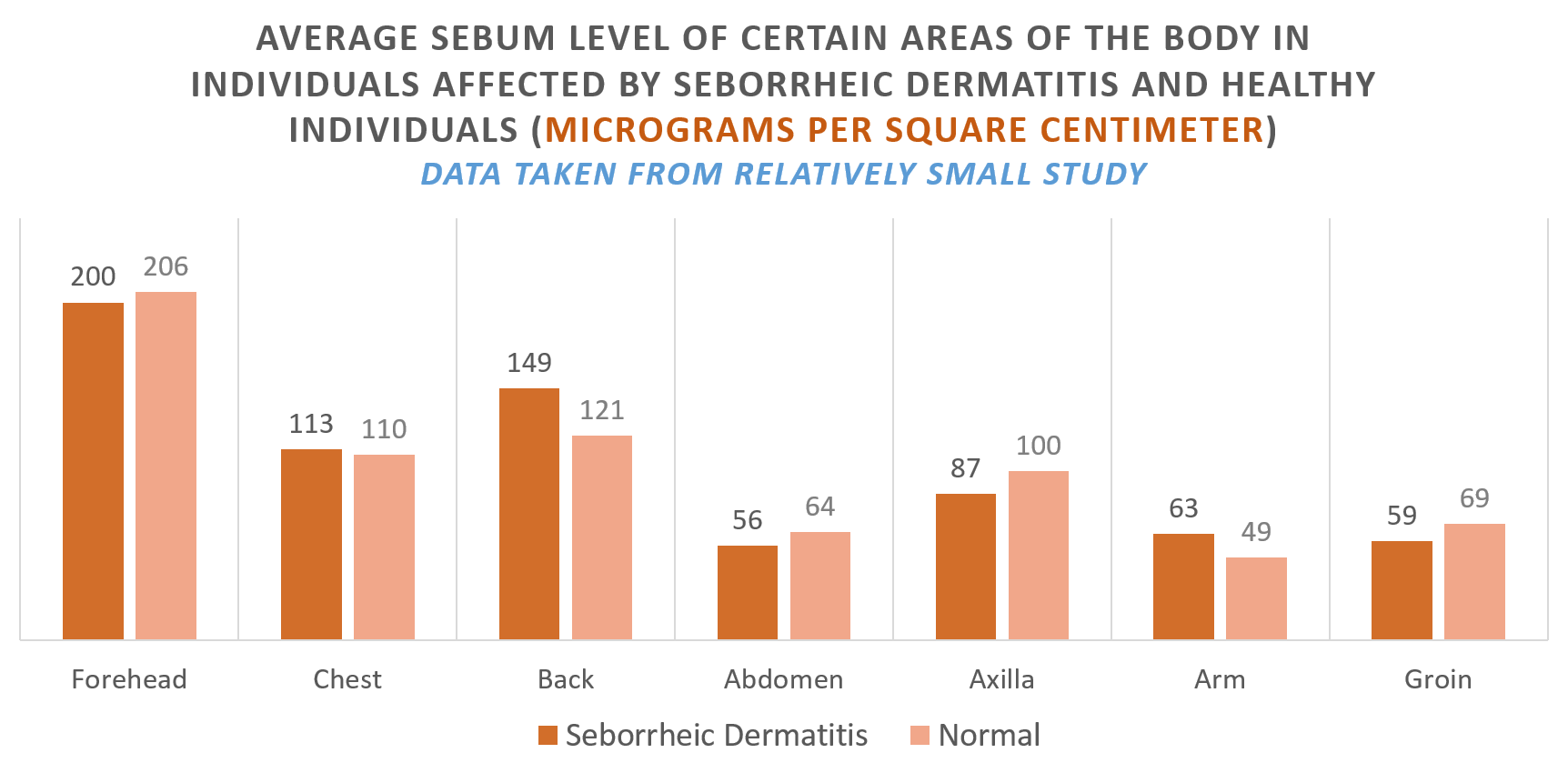
Potential Causes of Altered Sebum Composition
Several factors can contribute to imbalanced sebum composition. Some common possibilities include:
- Dietary lipid metabolism issues: Problems with how the body processes fats from food.
- Vitamin E deficiency: Insufficient vitamin E, a crucial antioxidant for protecting fatty acids.
- Skin-level fatty acid biosynthesis issues: Impairments in the skin’s own production of fatty acids.
This list represents just a starting point, and further research is needed to fully understand the complexities of sebum abnormalities in seborrheic dermatitis.

Key Takeaways: Sebum and Seborrheic Dermatitis
- Seborrheic dermatitis is a non-contagious condition primarily affecting sebum-rich skin areas.
- Malassezia yeast, while present, isn’t solely responsible; the process by which it feeds on sebum is a key factor.
- Malassezia is a normal skin resident that can trigger inflammation under certain conditions.
- Healthy sebum contains components like free fatty acids and peptides that protect against harmful microbes.
- Compromised sebum lacking protective elements becomes a food source for Malassezia, leading to irritating fatty acid release.
- Increased Malassezia activity can worsen sebum imbalance, creating a cycle of inflammation.
- Research indicates differences in sebum composition in seborrheic dermatitis, though extensive studies are lacking.
- Multiple factors, from diet to skin processes, can contribute to these sebum composition changes.
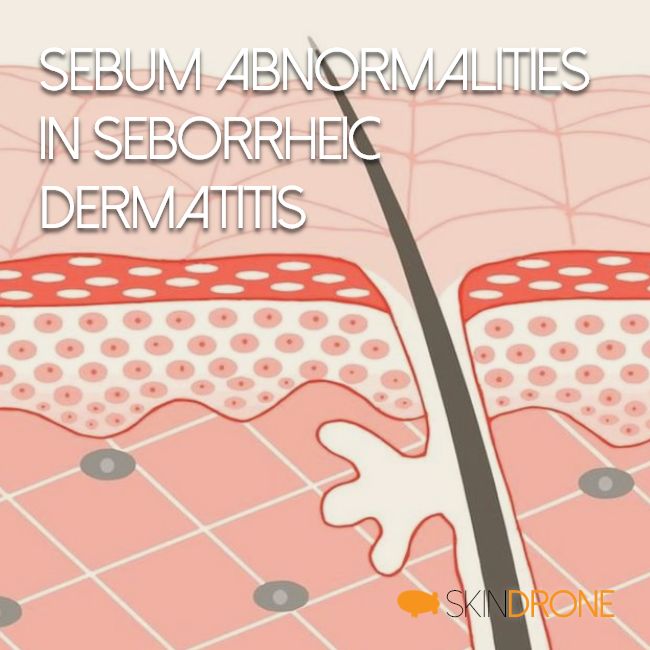
No Comments
Be the first to start a conversation